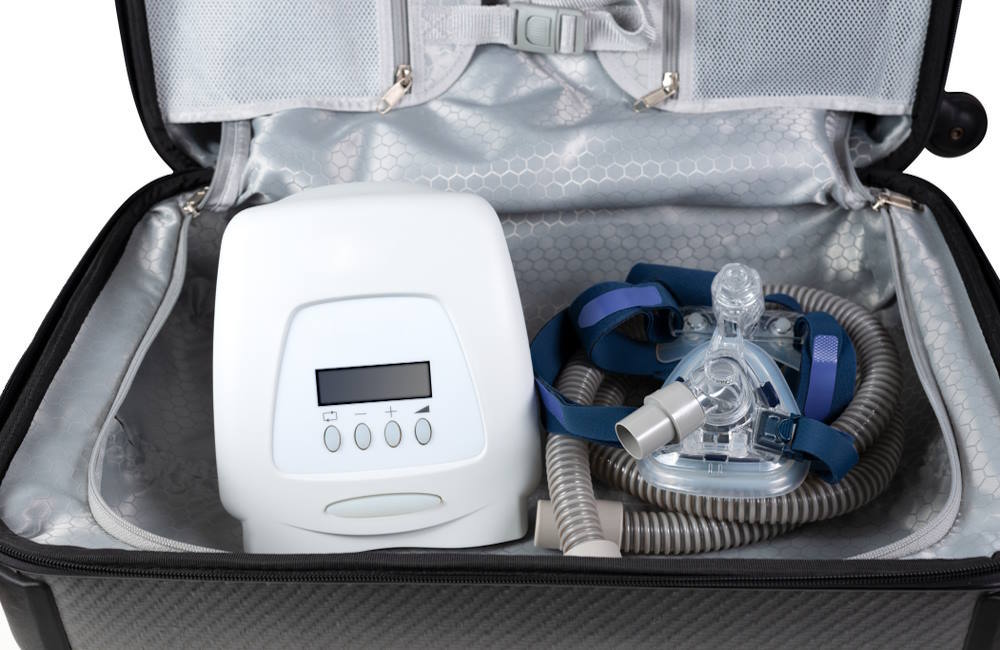
Flying on a commercial airline when you need to carry medical equipment may seem intimidating. In addition to getting through security and having the proper documentation, air travel with medical equipment also raises concerns about accessibility, the availability of assistance, and the complications of packing and carrying equipment.
But following some smart tips – and partnering with people who have experience in helping those traveling with medical equipment – can make the journey much smoother.
It’s an issue that comes up frequently in media reports. National Public Radio reported that those with disabilities, who often have medical equipment, report feeling “anxiety” and “dread” just thinking about flying. The New York Times reported that flying with a wheelchair can be “embarrassing” and “uncomfortable.”
It doesn’t have to be that way. Despite these stories, air travel with medical equipment can go much more smoothly with the right amount of preparation and assistance. It’s certainly an area where having your travel booked by an RN Flight Coordinator and making the journey with a flight nurse can make your trip much easier.
Tips For a Smooth Journey With Medical Equipment
While those who use medical equipment may have justifiable concerns about traveling on a commercial flight, it’s important to know many people who use medical equipment successfully fly every day. Airlines and airports are increasingly equipped to support passengers with various medical needs, and there are steps you can take to ensure a safe and comfortable journey.
What Medical Equipment Can You Bring?
The place to start when planning air travel with medical equipment is finding out what you can and cannot bring on a flight. The Transportation Security Administration offers a list of what is allowed on an airplane.
The list includes common devices such as blood sugar test kits, crutches, inhalers, insulin pumps and glucose monitors, walkers, and wheelchairs.
It’s important to check with the guidelines to see the details on some items. For example, the TSA allows nebulizers in carry-on bags, but they must be removed from the carrying case and undergo X-ray screening. Passengers are allowed to keep face masks and tubing in the case. Devices with lithium metal or lithium-ion batteries should always go into carry-on baggage. Passengers may provide a clear plastic bag to place the device in for X-ray screening.
In general, medical devices are allowed in carry-on bags, but not checked baggage.
Portable Oxygen Concentrators
Passengers can bring a portable oxygen concentrator onboard in carry-on and checked bags. The TSA provides a list of portable oxygen concentrators that meet FAA (Federal Aviation Administration) specifications for inflight use. The TSA notes that even permitted devices may not get through a checkpoint “if it triggers an alarm during the screening process, appears to have been tampered with, or poses other security concerns.”
External Medical Devices
Those with an external medical device attached to their body, such as a feeding tube or ostomy bag, must inform the TSA agent where it is located before the screening process begins. You may detach it for screening through the X-ray if it is safe to do so.
Passengers can use electronic assistive devices during flights, as long as they have documentation or a manufacturer’s label that assures the device meets FAA standards for safety and hazardous goods. Airlines require advance notice on the use of these devices. For example, United Airlines asks passengers to give information about these devices when they book a flight, adding: “We need to know at least 48 hours in advance that your device meets FAA requirements.”
Packing and Transporting Safety Equipment
When it comes to packing and transporting medical equipment, a wide range of related issues require your attention.
- Carry-On. This allows you to maintain direct control over your equipment, reducing the chances of damaged or lost medical equipment.
- Research. Knowing TSA rules is important, but you should also research online to find out the policies of the airline you are flying on. Also, notify them in advance about your intention to bring medical equipment on the flight.
- Packing. Pack and secure medical equipment using sturdy cases or bags designed for the device. Consider using padding or cushioning materials to protect fragile components. Clearly label your medical equipment and its components, including any removable parts or accessories.
- Batteries and chargers. Pack enough batteries, power adapters, or chargers for medical equipment. Place them in a carry-on bag, along with any accessories.
- Documentation. Bring copies of important medical documents – especially prescriptions and letters from healthcare providers describing both your condition and the need for medical equipment.
Ensuring Accessibility and Assistance
As noted by AARP, the federal Air Carrier Access Act mandates that airlines and airports provide accommodations for those who need assistance with mobility issues, hearing and vision impairment, and other types of debilitating conditions. It’s important to ask for assistance in advance, either when booking a flight or through an airline’s special assistance team.
When booking online, every airline will offer the chance at some point in the process to request special assistance. This can help your travel go much more smoothly. Most airlines will contact you a few days before your flight. If they do not, experts recommend contacting the airline to ensure they understand what you will need to safely and comfortably make your flight.
On the plane, airlines have special wheelchairs for the narrow walkway between rows of seats, allowing them to transport you to your seat. Your regular wheelchair and walker will get stored with the cargo in the plane.
While it comes with a certain amount of challenges, air travel with medical equipment is possible. It’s important to understand what you can and cannot bring on your trip. It’s also a situation where it’s worth considering working with a professional non-emergency medical transport company to ensure your journey goes as smoothly as possible.
